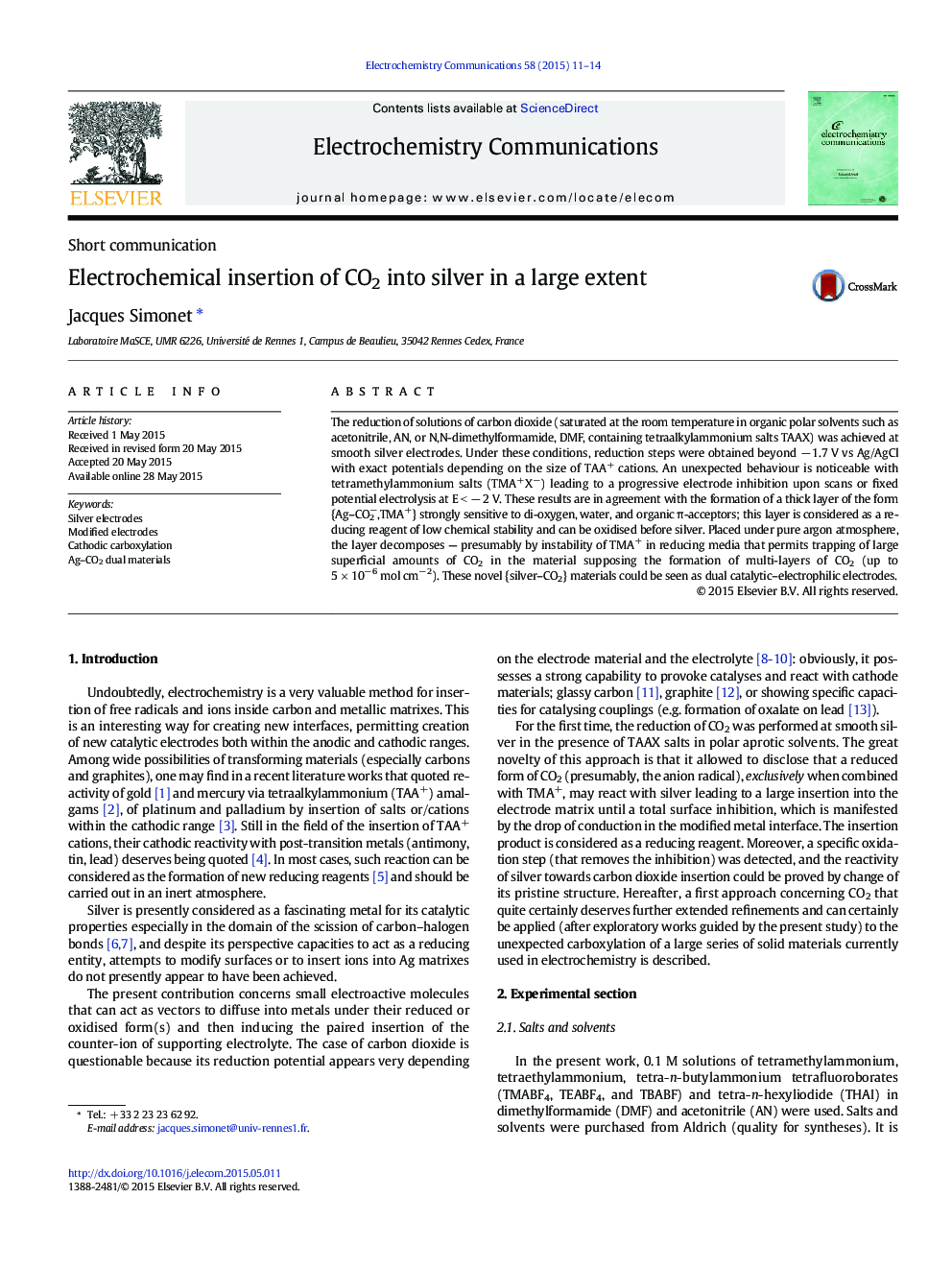| کد مقاله | کد نشریه | سال انتشار | مقاله انگلیسی | نسخه تمام متن |
|---|---|---|---|---|
| 178796 | 459320 | 2015 | 4 صفحه PDF | دانلود رایگان |

• Large electrochemical insertion of carbon dioxide in massive silver
• Surfacial decoration versus mass modification
• Ag–CO2− electrolyte cation transient for a new solid material
• Specific use of tetramethylammonium salts for a successful mass carboxylation
• Stocking CO2 with evolving under anodic electron transfer
The reduction of solutions of carbon dioxide (saturated at the room temperature in organic polar solvents such as acetonitrile, AN, or N,N-dimethylformamide, DMF, containing tetraalkylammonium salts TAAX) was achieved at smooth silver electrodes. Under these conditions, reduction steps were obtained beyond − 1.7 V vs Ag/AgCl with exact potentials depending on the size of TAA+ cations. An unexpected behaviour is noticeable with tetramethylammonium salts (TMA+X−) leading to a progressive electrode inhibition upon scans or fixed potential electrolysis at E < − 2 V. These results are in agreement with the formation of a thick layer of the form {Ag–CO2−,TMA+} strongly sensitive to di-oxygen, water, and organic π-acceptors; this layer is considered as a reducing reagent of low chemical stability and can be oxidised before silver. Placed under pure argon atmosphere, the layer decomposes — presumably by instability of TMA+ in reducing media that permits trapping of large superficial amounts of CO2 in the material supposing the formation of multi-layers of CO2 (up to 5 × 10− 6 mol cm− 2). These novel {silver–CO2} materials could be seen as dual catalytic–electrophilic electrodes.
Figure optionsDownload as PowerPoint slide
Journal: Electrochemistry Communications - Volume 58, September 2015, Pages 11–14